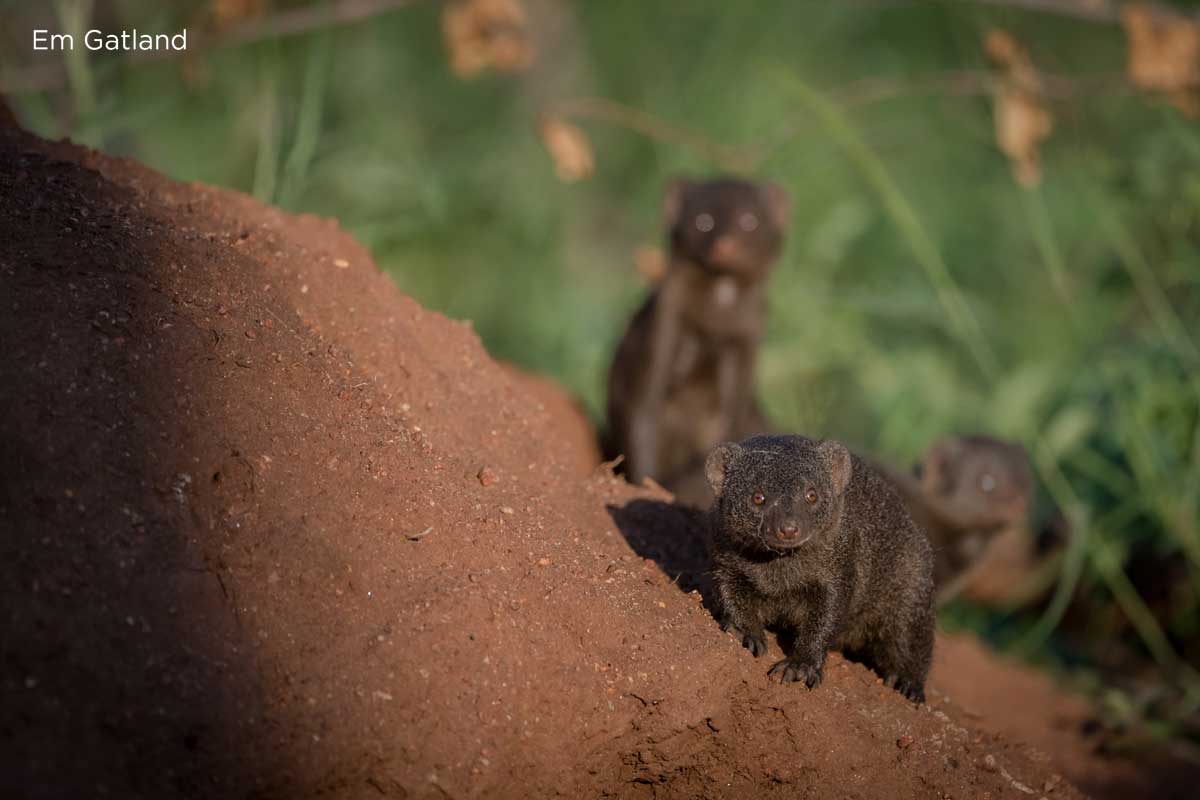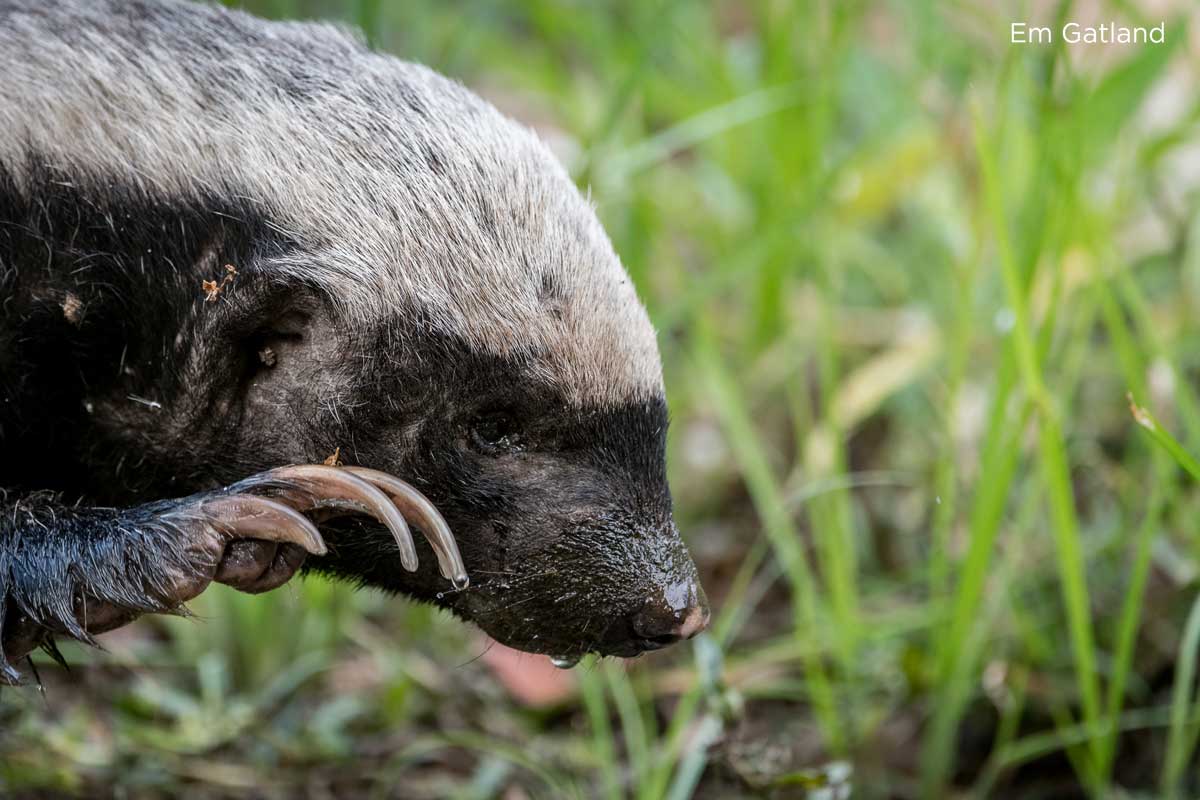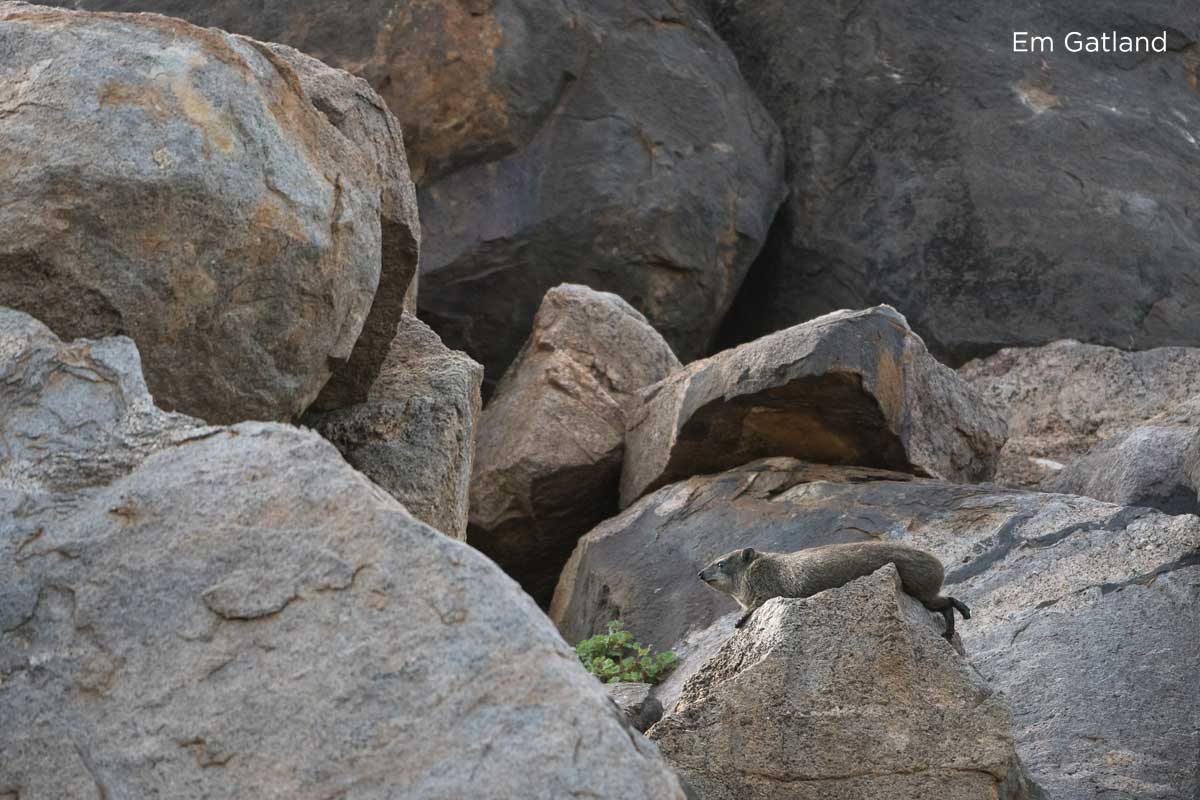There is nothing more endearing than spotting a bumbling ball of lion cub fluff stumbling over tiny obstacles. The pups, cubs and calves of the safari world almost always evoke a “aaah cute” response. It’s a natural reaction to spotting one of the youngsters belonging to the big five. First-time safari-goers will no doubt have a list of wildlife they’d like to see while out in the wild, but there are probably numerous species that haven’t made the list, and they’re the “smaller” things that bring an added dimension to game viewing. In this blog post, we chat about our top 5 strangely cute animals to spot on safari – the ones that play second fiddle to the more popular wildlife.
Dwarf Mongoose
The dwarf mongoose is the smallest carnivore in the bushveld, and are diurnal creatures which make them easy to spot while out on a drive. These creatures are gregarious and highly social animals that live in communities in homes comprising a network of underground burrows. Mongoose tends to dart back and forth in the low-lying shrubbery in search of scorpions, spiders and insects, which make up the bulk of their diet. The dwarf mongoose has a strong hierarchal social structure between same sexes, with a dominant pair heading up the group. Dwarf mongoose are strong in spirit and character, and are actually extremely territorial!


Honey Badger
The honey badger is a ferocious and industrious animal that has an adorable appearance, but should actually be feared. It looks adorable, but it has a menacing streak. A honey badger has the ability to sleep off a massive dose of cobra venom and simply becomes vaguely drowsy when injected with the potential poison. Honey badgers don’t fear much and will quite happily waltz straight into the grounds of a lodge in search of food.
Their blade-like claws are used to dig up termite mounds in search of prey, break locks off doors and for stripping the bark off trees to access a supply of protein-filled grubs and insects. A honey badger has a leathery and loose skin which actually protects its body. If gripped by the jaws of a predator, a honey badger can twist and turn freely within its skin, avoiding damage to major organs.
Moral of the story? Don’t ever mess with a honey badger!

Bushbaby
The bushbaby is an adorable little creature with human-like extremities. Its fingernails are rounded like humans and the feet resemble that of a baby. It’s a nocturnal primate that spends most of its time clinging to branches, and they’re quite hard to spot given their minute size.
It has disc-shaped eyes that can move within its sockets, giving it the ability to see from all angles. These tiny primates are excessively quick and are often spotted flying through the air from branch-to-branch, reaching vast distances of up to 7 metres in a single jump and 2 meters vertically, making them one of the most agile animals in the wild.
Another interesting fact? The bushbaby is extremely vain and spends ample time grooming their fur-lined bodies.
Porcupine
The herbivorous and tubby porcupine carries its weapons on its body, with its spiky appearance ensuring predators are kept at bay. Porcupines shooting quills from their body is a myth, and it’s actually their tail that is used to swat those that dare come close. It then releases the unforgiving quills into the skin of its attacker, making sure that their target is riddled with pain. The good news? A porcupine’s quills actually contain a natural antibiotic, so the threat of infection is low. This guards them against infecting themselves if they happen to pierce their own body.
A cute fact? A baby porcupine is called a porcupette!

Dassie
The dassie is otherwise known as a rock hyrax, and it’s a stout furry animal that inhabits rocky terrain. They seek shelter in rock crevices and caves, and can often be found sunning their round bodies on warm rocks. The dassie is not an active species and its only weapon of defence is its massively long incisors. Dassies follow a herbivorous diet and gain the majority of their nutrients from the surrounding vegetation.
They have a special claw that is used for grooming and removing parasites. Their closest relatives? Elephants and manatees!


